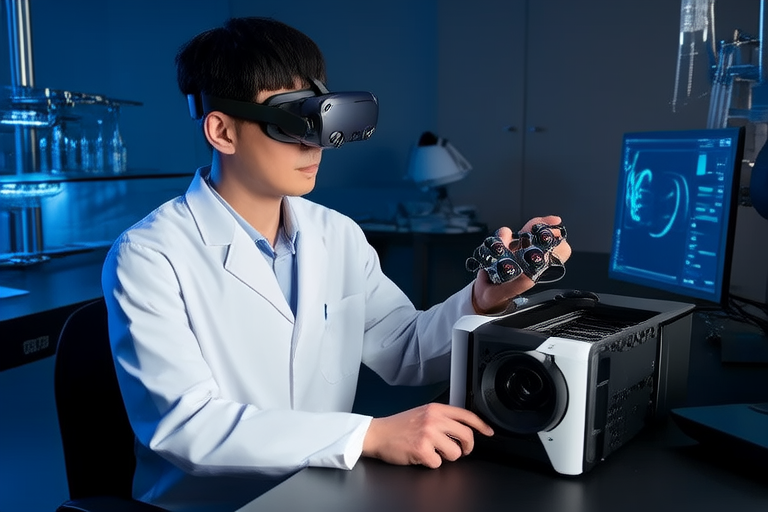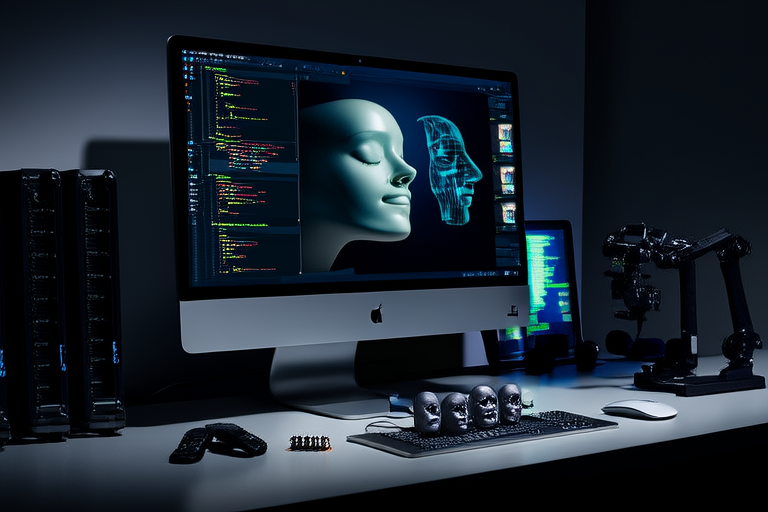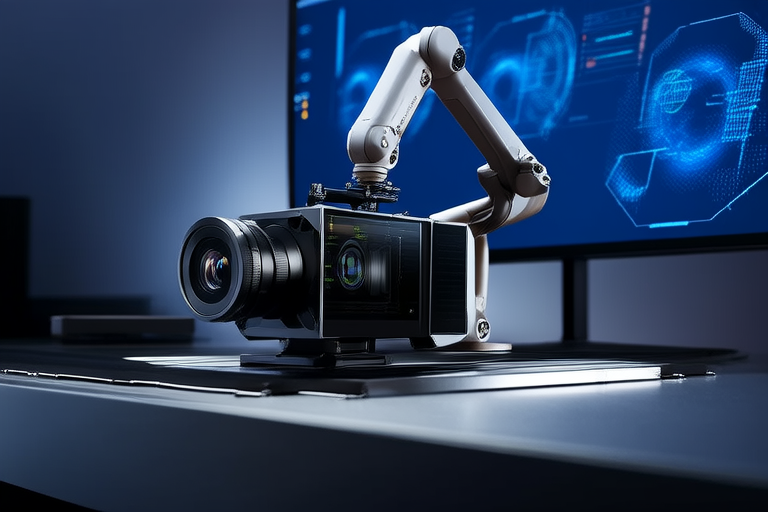Exploring the Future of Computer Vision: Trends and Predictions
Introduction to Computer Vision
Computer vision, a subfield of artificial intelligence (AI), focuses on enabling machines to interpret and understand visual data from the world. This technology allows computers to process images and videos in ways that mimic human sight, extracting meaningful information and making decisions based on it. From recognizing faces in photographs to identifying defects in manufacturing lines, computer vision has already demonstrated its transformative potential across various industries.
The foundation of computer vision lies in algorithms and models trained to detect patterns, objects, and anomalies within visual data. Early iterations relied heavily on handcrafted features and rigid programming rules, but advancements in machine learning, particularly deep learning, have revolutionized the field. Neural networks, especially convolutional neural networks (CNNs), have become the backbone of modern computer vision systems, enabling unprecedented accuracy and efficiency in tasks such as image classification, object detection, and semantic segmentation.
As the demand for automation and intelligent systems grows, computer vision continues to evolve rapidly. This article explores the key trends shaping the field today, predictions for its future trajectory, and the wide-ranging applications that could redefine industries in the coming years.
Key Current Trends Shaping the Field
Several trends are driving innovation and adoption in computer vision, each contributing to its growing capabilities and expanding use cases.
1. Advancements in Deep Learning Architectures
Deep learning remains at the forefront of computer vision research and development. Recent innovations in neural network architectures, such as transformers and vision-specific models like Vision Transformers (ViTs), have pushed the boundaries of what is possible. These architectures excel at capturing intricate relationships within visual data, leading to improved performance in complex tasks like image recognition and scene understanding.
Additionally, lightweight models designed for edge devices are gaining traction. These models balance computational efficiency with accuracy, making computer vision accessible for real-time applications on smartphones, drones, and IoT devices.
2. Integration with Other AI Technologies
Computer vision is increasingly being combined with other AI disciplines, such as natural language processing (NLP) and reinforcement learning. Multimodal AI systems, which process both visual and textual data, are becoming more prevalent. For example, image captioning tools leverage computer vision to analyze visuals and NLP to generate descriptive text, creating seamless interactions between humans and machines.
This integration is also evident in robotics, where computer vision enables robots to perceive their surroundings while reinforcement learning guides their decision-making processes. Such synergies are paving the way for more intelligent and autonomous systems.
3. Rise of Synthetic Data and Simulation
One of the challenges in training computer vision models is the need for large, labeled datasets, which can be time-consuming and expensive to create. To address this, synthetic data generation and simulation environments are emerging as viable alternatives. Tools like generative adversarial networks (GANs) can produce realistic images, while virtual simulations replicate real-world scenarios for training purposes.
Synthetic data not only reduces dependency on manual labeling but also allows developers to test models in diverse and controlled conditions, improving robustness and generalization.
4. Ethical Considerations and Bias Mitigation
As computer vision becomes more pervasive, concerns about privacy, bias, and ethical implications have come to the forefront. Biases in training data can lead to unfair or inaccurate outcomes, particularly in sensitive applications like facial recognition. Researchers and organizations are actively working to develop fairer algorithms and establish guidelines for responsible AI deployment.
Techniques such as explainable AI (XAI) are also gaining attention, aiming to make computer vision systems more transparent and interpretable. By understanding how decisions are made, stakeholders can ensure accountability and trustworthiness.
Predictions for the Future Evolution of Computer Vision
Looking ahead, several predictions highlight the direction in which computer vision is likely to evolve, driven by technological breakthroughs and societal needs.
1. Enhanced Generalization and Adaptability
Current computer vision systems often struggle with generalizing beyond their training data. However, future advancements may enable models to adapt dynamically to new environments and tasks without extensive retraining. Techniques like meta-learning and continual learning hold promise in creating systems that learn incrementally and transfer knowledge across domains.
This adaptability will be crucial for applications in unpredictable settings, such as autonomous vehicles navigating diverse terrains or medical imaging systems analyzing rare conditions.
2. Greater Emphasis on Real-Time Processing
Real-time processing will become a cornerstone of computer vision, particularly for applications requiring immediate feedback. Innovations in hardware, such as specialized AI chips and GPUs, will complement software optimizations to deliver faster inference speeds. Edge computing will play a vital role, allowing devices to process visual data locally rather than relying on cloud infrastructure.
Industries like healthcare, retail, and security stand to benefit significantly from real-time capabilities, enabling quicker diagnoses, personalized customer experiences, and enhanced surveillance.
3. Democratization of Computer Vision Tools
The availability of user-friendly platforms and pre-trained models is lowering the barrier to entry for businesses and individuals seeking to leverage computer vision. Open-source libraries like TensorFlow and PyTorch, along with no-code/low-code solutions, empower non-experts to build and deploy vision-based applications.
This democratization will spur innovation across sectors, fostering creativity and experimentation among startups, researchers, and hobbyists alike.
4. Convergence with Augmented and Virtual Reality
Augmented reality (AR) and virtual reality (VR) are poised to integrate deeply with computer vision, creating immersive experiences that blend digital content with the physical world. Computer vision will enhance AR/VR applications by enabling precise tracking, gesture recognition, and spatial mapping.
From interactive gaming to virtual try-ons in e-commerce, the convergence of these technologies will unlock new possibilities for engagement and interaction.
Potential Applications Across Industries
Computer vision’s versatility ensures its relevance across a broad spectrum of industries, each benefiting from its unique capabilities.
1. Healthcare
In healthcare, computer vision is transforming diagnostics, treatment planning, and patient care. Medical imaging technologies powered by computer vision can detect abnormalities in X-rays, MRIs, and CT scans with remarkable accuracy. Surgical robots equipped with vision systems assist surgeons in performing minimally invasive procedures, reducing recovery times and improving outcomes.
Beyond diagnostics, wearable devices incorporating computer vision monitor patients’ movements and vital signs, offering early warnings for potential health issues.
2. Retail and E-Commerce
Retailers are leveraging computer vision to enhance shopping experiences and streamline operations. Smart shelves equipped with cameras track inventory levels in real time, minimizing stockouts and optimizing supply chains. In-store analytics provide insights into customer behavior, helping businesses tailor marketing strategies and improve store layouts.
E-commerce platforms utilize computer vision for visual search, allowing users to upload images to find similar products. Virtual fitting rooms powered by augmented reality further enhance online shopping convenience.
3. Manufacturing and Quality Control
Manufacturing facilities employ computer vision for quality assurance, inspecting products for defects during production. Automated inspection systems reduce reliance on manual labor, increasing efficiency and consistency.
Computer vision also supports predictive maintenance by monitoring equipment for signs of wear and tear, preventing costly breakdowns and downtime.
4. Transportation and Autonomous Vehicles
Autonomous vehicles rely heavily on computer vision to perceive their surroundings and navigate safely. Cameras mounted on vehicles capture road conditions, traffic signals, and obstacles, feeding this information into AI systems that make driving decisions.
Public transportation systems benefit from computer vision through crowd monitoring and safety enhancements, ensuring smoother operations and passenger security.
5. Agriculture
In agriculture, computer vision aids in crop monitoring, pest detection, and yield estimation. Drones equipped with cameras survey fields, providing farmers with actionable insights to optimize resource allocation and maximize productivity.
Automated harvesting machines guided by computer vision identify ripe produce, reducing waste and labor costs.
Conclusion
Computer vision is on the cusp of a new era, driven by technological advancements and an ever-expanding array of applications. As deep learning architectures become more sophisticated, ethical considerations gain prominence, and real-time processing becomes standard, the field will continue to push the boundaries of what machines can achieve.
From healthcare to agriculture, the impact of computer vision will be felt across industries, reshaping workflows and unlocking opportunities for innovation. By staying attuned to current trends and anticipating future developments, businesses and researchers can harness the full potential of this transformative technology, paving the way for a smarter, more connected world.




